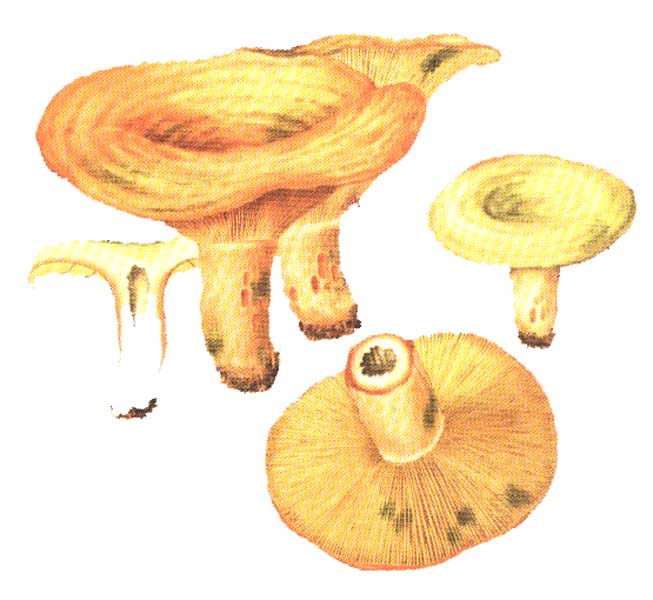
LACTARIUS DELICIOSUS
Cap 5-15 cm, funnel shaped and with more or less explanate margin; smooth, viscid in humid weather; orange, with darker concentric zones; upon ripening becomes entirely green, starting from the darker bands; also becomes green when bruised. Stem cylindric, soon eroded and hollow; of the same color as the cap, covered with rosy or ochraceous scurf. Flesh hard, brittle, granular; white; greenish under the dark zones of the cap; pale orange at the periphery; exposed to air it becomes quickly green, but this coloring then disappears. Latex orange; becoming green in contact with air. Odor acidulous. Flavor: the flesh more or less acrid, the latex mild. Gills slightly paler than the cap; unequal; decurrent. Spores white or cream. It grows in coniferous woods, especially under pines and near junipers. In the variety salmonicolor, of pine and fir woods, it does not become green and has a mild flavor. Edible, of good quality: it should be cooked quickly at high flame, not stewed. Similar to L. deliciosus, and also edible: Lactarius semisanguifluus: cap faded cinereous ocher, speckled with greenish spots arranged radially; gills soon blue green; flesh white, becoming speckled with blood red spots when exposed to air; latex orange, then violet brown; in autumn, in pine woods. Lactarius indigo, rare North American species, entirely indigo colored. Lactarius hemicyaneus: flesh of the cap and latex blue; flavor mild.